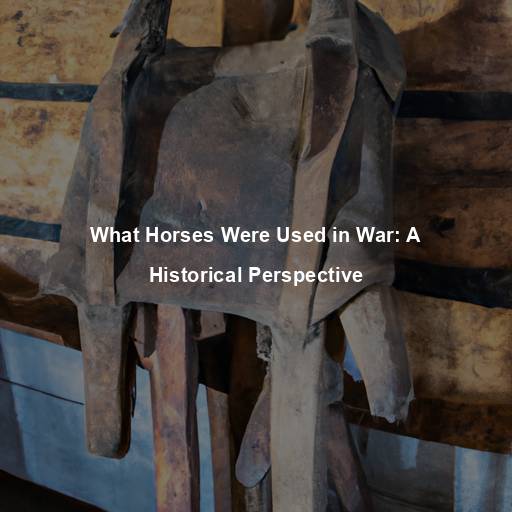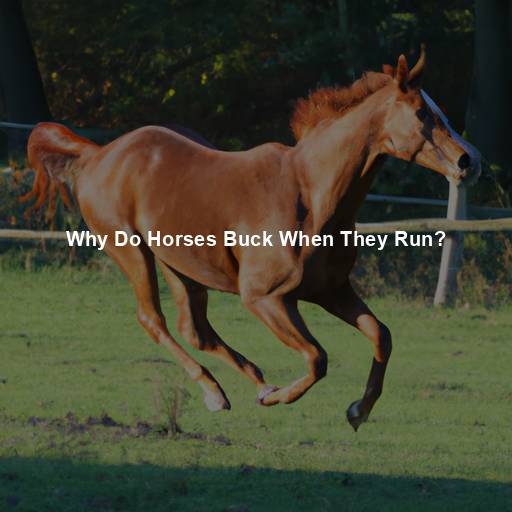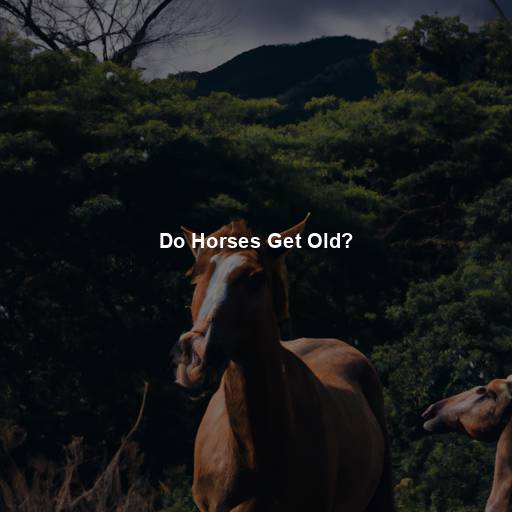What Horses Were Used in War: A Historical Perspective
Last Updated on July 27, 2023 by Evan
Contents
- 1 The Evolution of Horses in Warfare
- 2 Ancient War Horses: The Steeds of Conquerors
- 3 Medieval War Horses: Knights and Chargers
- 4 Modern War Horses: Adapting to Changing Times
- 5 The Impact of Technology on Horses in Warfare
- 6 Caring for War Horses: Pioneers in Veterinarian Medicine
- 7 The Symbolism of War Horses: Courage, Strength, and Freedom
- 8 The Future of Horses in Warfare: Adaptation and Innovation
- 9 The Enduring Spirit of War Horses: Lessons Learned
- 10 FAQs – What Horses Were Used in War
- 10.1 What types of horses were commonly used in war?
- 10.2 How were horses trained for war?
- 10.3 Were war horses armored like their riders?
- 10.4 What roles did horses play in battle?
- 10.5 Were all war horses ridden by soldiers?
- 10.6 How were war horses cared for during campaigns?
- 10.7 Were war horses often injured in battle?
- 10.8 What happened to war horses after battles or wars?
The Evolution of Horses in Warfare
Over countless centuries, there has been an undeniable and awe-inspiring connection between horses and war. These majestic beings have stood as stalwart warriors on the frontlines, carrying soldiers and propelling chariots into the heart of the chaos. In this captivating piece, we embark on a journey through time to uncover the remarkably diverse breeds that have left an indelible mark on the annals of warfare, each possessing their own extraordinary traits and imprint on the battlefield. Prepare to be enthralled by their historical significance and the profound impact they have had on military campaigns throughout the ages.
Ancient War Horses: The Steeds of Conquerors
Arabian Horses: The Bedouin’s Battle Companions
Throughout the annals of time, the captivating grace and unyielding stamina of Arabian horses have woven a tale of awe and astonishment. Forged in the rugged lands of the Arabian Peninsula by the venerable Bedouin tribes, these magnificent creatures were hailed as warriors on hooves. An embodiment of unwavering tenacity, their lithe frames and robust sinew propelled them swiftly through treacherous desert terrain, leaving adversaries dazed and confounded. Brimming with an innate wisdom and an unbreakable bond with their riders, these horses were the epitome of equine loyalty.
Andalusian Horses: The Noble Warriors of Spain
With roots reaching back to the sun-drenched lands of the Iberian Peninsula, Andalusian horses have captivated hearts and conquered horizons. As the trusted companions of Spanish conquistadors, these majestic creatures stood tall as symbols of prowess and evoked a sense of awe on the battlefield. Gifted with a rare combination of strength, elegance, and adaptability, they effortlessly executed intricate maneuvers that left foes and allies alike in a state of perplexity. Their intrinsic ability to seamlessly harmonize power and grace made them more than mere horses – they became living legends.
War Elephants: The Giants of Ancient Warfare
Though not horses, war elephants played a significant role in ancient warfare, particularly in the battles fought by empires such as Persia, Carthage, and India. These colossal creatures, capable of carrying soldiers and trampling enemies, struck fear into the hearts of opposing forces. With their imposing size and strength, war elephants were a formidable weapon that could turn the tide of battle.
Medieval War Horses: Knights and Chargers
Destriers: The Noble Steeds of Knights
In the mystifying and captivating era of knights and chivalry, a mesmerizing creature epitomized the essence of power and valor: the destrier. These magnificent war horses, meticulously bred and honed to perfection, became steadfast companions to knights embarking on their valiant quests. With a mixture of awe-inspiring brawn and unwavering resilience, destriers triumphantly carried their armored riders into the heart of battle, unleashing their might upon adversaries as if summoning untamed forces of chaos and destiny.
Friesian Horses: The Black Beauties of War
Originating from the Netherlands, Friesian horses gained popularity as war horses during the Middle Ages. Recognizable by their striking black coats and flowing manes, these horses possessed a combination of strength, agility, and elegance. Friesians were often favored by knights for their ability to perform complex maneuvers and carry them confidently into battle.
Warhorses of the Mongol Empire: Conquerors on Horseback
The Mongol Empire, led by the legendary Genghis Khan, relied heavily on horses for their military campaigns. Mongol warhorses, such as the Mongolian horse and the sturdy steppe pony, played a pivotal role in the empire’s conquests. These horses were agile, adaptable, and capable of enduring long marches across vast territories, making them formidable adversaries on the battlefield.
Modern War Horses: Adapting to Changing Times
Cavalry Horses in World War I: Charging into the Trenches
World War I marked a significant shift in warfare, with the introduction of modern weapons and trench warfare. Despite these changes, horses were still utilized by cavalry units for reconnaissance, transport, and even charges. Breeds such as the Thoroughbred, Arabian, and Quarter Horse were commonly used, prized for their speed, agility, and ability to navigate difficult terrain.
War Horses of World War II: Supporting Allied Forces
Throughout the tumultuous years of World War II, the ceaseless march of progress reshaped the battlefield’s dynamic, casting shadows of doubt upon the once-mighty steeds. Yet, amidst the cacophony of mechanization, horses persevered, their stoic presence etching an indelible mark upon treacherous mountain ranges and enigmatic paths inaccessible to heavy vehicles. In this intricate tapestry of warfare, stalwart breeds like the Norwegian Fjord horse and the American Quarter Horse swiftly transformed into silent heroes, bearing the weight of supplies, hauling menacing artillery, and tenderly carrying the fragile hopes of wounded soldiers. These humble equines embodied both an eternal bond between man and beast and the unyielding tenacity of companionship amidst the chaos of conflict.
Military Police Horses: Guardians of Order
In this fast-paced and ever-changing world, one might be surprised to discover that the noble horse still plays a vital role in our modern society. With their undeniable grace and strength, these majestic creatures have found their place in the ranks of military and law enforcement agencies. Imagine the perplexity of witnessing a towering horse, ridden by a diligent officer, gracefully navigating through a throng of people, maintaining order and ensuring the safety of all. The burstiness of their power, combined with their calm demeanor, sends a clear message to potential troublemakers – authority is watching, and it comes in a form both awe-inspiring and mysterious.
In the vast and untamed vastness of rugged terrains, where conventional vehicles are left bamboozled by the perplexing challenges, trusty steeds come to the rescue. With skilled and seasoned riders in the saddle, these gallant search and rescue horses gallop through the obfuscating wilderness, swifty covering vast areas. They are the unsung heroes, aiding in the search for lost souls and providing a lifeline in dire emergency situations.
Equine Therapy in the Military: Healing Hearts and Minds
Recognizing the therapeutic benefits of interacting with horses, many military organizations have implemented equine-assisted therapy programs. These programs help veterans and active-duty personnel cope with the physical and emotional tolls of combat. Horses provide a non-judgmental and calming presence, allowing individuals to develop trust, build confidence, and work through trauma.
The Impact of Technology on Horses in Warfare
The Rise of Mechanization: Changing the Battlefield
The rapid progression of technology and the evolution of warfare have yielded fascinating transformations in the role of horses. In modern conflicts, the reliance on these majestic creatures has gradually dwindled due to the advent of cutting-edge machinery and mechanized warfare. Tanks, armored vehicles, and aircraft have emerged as formidable replacements, infusing battlefields with unprecedented speed and firepower. Consequently, the traditional sight of cavalry charges and horses galloping into action seems increasingly distant and elusive in the tumultuous theater of war.
Preservation and Heritage: Honoring the Legacy
In a world where the battlefields have evolved beyond the need for their practicality, the relentless spirit of preserving the war horse heritage persists. From the hallowed halls of museums to the solemn grounds of memorials, the unyielding dedication to honoring these majestic creatures has taken shape. Through the captivating reenactments that echo with the hoofbeats of the past, the memory of these noble warriors forever etches itself into the annals of history, ensuring that their formidable contributions to warfare remain indelible.
Caring for War Horses: Pioneers in Veterinarian Medicine
Veterinary Care in the Field: Treating Equine Warriors
Throughout history, the welfare and health of war horses have been of paramount importance. In ancient times, skilled healers accompanied armies to provide medical care for injured horses. Today, veterinarians specialize in equine medicine, ensuring that military and working horses receive proper medical attention, preventive care, and rehabilitation when needed.
The Legacy of Horse Care: Advancements in Veterinary Science
Throughout history, the journey of war horses has unknowingly unlocked a trove of progress in the realm of veterinary science. The unwavering dedication of veterinarians has given rise to a plethora of groundbreaking techniques, tailored exclusively for the intricate world of equine medicine. These remarkable advancements have revolutionized the way we understand, diagnose, and heal the myriad of injuries, diseases, and conditions that befall these noble creatures. Moreover, the impact of these pioneering discoveries transcends the frontline, extending their reach to benefit horses from diverse backgrounds, ensuring their overall welfare is safeguarded.
The Symbolism of War Horses: Courage, Strength, and Freedom
Courage and Bravery: The Spirit of the Horse
Throughout history, the noble war horses have stood as awe-inspiring icons of bravery and unwavering allegiance. Their fierce loyalty and fearlessness in the face of perilous battles embody the essence of these majestic beings. The everlasting image of a formidable rider gracefully commanding a mighty steed has transcended time, etching itself as a perpetual symbol of valor against all odds.
Strength and Power: A Force to be Reckoned With
Throughout the annals of time, mere mortals have been transfixed by the extraordinary might and mettle encased within the very essence of war horses. Their robust frames, capable of bearing the weighty burdens of knights adorned in impenetrable armor, or effortlessly hauling artillery of formidable proportions, never failed to invoke a sense of sheer grandeur. These noble creatures were animated embodiments of unyielding strength and unmatched power, personifying the indomitable force that coursed through the veins of the armies they dutifully served.
Freedom and Liberation: Horses in Post-War Narratives
In post-war narratives, horses often symbolize liberation and freedom. They are frequently associated with the end of conflict and the restoration of peace. The image of soldiers riding horses triumphantly into liberated territories has become an enduring symbol of hope, resilience, and the pursuit of a better future.
War Horses in Art: Capturing the Spirit
The valor and beauty of war horses have inspired countless artists throughout the ages. Paintings, sculptures, and other artistic expressions depict the strength, grace, and majesty of these noble creatures. From renowned equestrian portraits to epic battle scenes, art has immortalized the spirit of war horses, allowing their legacy to transcend time.
War Horses in Literature: Tales of Heroism
War horses have also served as central figures in literature, representing themes of loyalty, sacrifice, and heroism. From ancient myths and legends to classic novels and modern works, these equine characters capture the imagination and stir the emotions of readers. Stories like “Black Beauty” by Anna Sewell and “War Horse” by Michael Morpurgo pay homage to the profound bond between humans and their equine companions.
The Future of Horses in Warfare: Adaptation and Innovation
Equine-Assisted Technology: An Evolving Landscape
In the ever-advancing realm of technology, the indelible connection between horses and warfare finds itself at the crossroads of evolution. The enigmatic potential of equine-assisted technology, with its robotic steeds for reconnaissance and sensor-laden mounts, beckons us towards an enigmatic future. The convergence of ancient equestrian prowess and state-of-the-art innovation promises an intricate tapestry of tradition seamlessly interwoven with the enigmatic frontiers of the new age.
Ethical Considerations: The Well-being of Equine Warriors
As we contemplate the future of horses in warfare, ethical considerations come to the forefront. Ensuring the well-being and humane treatment of these animals should remain a priority. Striking a balance between tradition, innovation, and animal welfare will be crucial in any future developments involving horses in military contexts.
The Enduring Spirit of War Horses: Lessons Learned
The legacy of war horses extends far beyond the battlefield. Their stories teach us valuable lessons about loyalty, resilience, and the indomitable spirit of animals. As we look back on their contributions, we are reminded of the profound connections between humans and animals, and the remarkable bonds that can be forged in the face of adversity.
In an ever-changing world, the memory of war horses serves as a reminder of the sacrifices made by both humans and animals in times of conflict. Their unwavering courage and unwavering loyalty continue to inspire and captivate our collective imagination. Let us honor their memory, celebrate their legacy, and strive to protect and cherish these magnificent creatures for generations to come.
In the end, the true impact of war horses goes beyond their historical significance. It lies in the hearts and minds of those who recognize their extraordinary contributions and find inspiration in their spirit. The story of war horses is one of courage, companionship, and the enduring bond between humans and animals – a timeless tale that resonates with us all.
FAQs – What Horses Were Used in War
What types of horses were commonly used in war?
Over the course of time, humanity has relied on the noble and awe-inspiring presence of horses in the battlefield. Amongst the remarkable array of equine companions, we find the mighty Percherons and Clydesdales, embodying an undeniable force that could bear the weight of armored knights with unwavering determination. However, the ever-changing nature of warfare also necessitated the inclusion of swift and nimble creatures like Arabians, Andalusians, and Barbs, who gracefully galloped through the chaos, often favored by those skilled in horse archery or those in search of vital reconnaissance.
How were horses trained for war?
Horses used in war were carefully trained to be comfortable amidst the chaos and violence present on the battlefield. They were exposed to various stimuli like loud noises, unfamiliar environments, and other terrifying scenarios to desensitize them. Additionally, specific commands and signals were taught to aid in maneuverability and response during battle. These horses were often raised and trained from a young age to ensure trust and familiarity with their handlers.
Were war horses armored like their riders?
Yes, the horses employed in warfare were often armored to some extent. The level of protection, however, varied depending on the period and region. Horses might wear protective gear such as chamfrons or head armor, peytrals or chest armor, and sometimes even full barding or body armor. These protective coverings were designed to safeguard horses from various dangers, such as enemy weapons or projectiles.
What roles did horses play in battle?
Throughout history, horses have continuously emerged as indispensable companions on the battlefield, divinely blending strength and agility. In the glorious era of medieval warfare, the noble steeds donned impenetrable armor, transforming into formidable platforms aiding knights in their close-range encounters. Meanwhile, their lighter counterparts gracefully galloped, assuming crucial roles as scouts, bridging communication gaps between units, and expertly maneuvering as cavalry to confound and outflank adversaries. Beyond the chaos of conflict, these magnificent creatures assumed essential responsibilities, offering not only transportation for supplies but also the power to tow mighty artillery pieces. Their adaptability and unwavering service during these tumultuous times remain an awe-inspiring testament to the awe-inspiring bond shared between humans and horses.
Were all war horses ridden by soldiers?
No, not all war horses were ridden by soldiers. Some horses were exclusively used for pulling wagons or carrying supplies and artillery. These horses, known as draught horses, were bred for their strength and endurance to assist in logistics during war. They played an essential role in transportation and the smooth functioning of armies.
How were war horses cared for during campaigns?
War horses were cared for meticulously during campaigns to ensure their performance and well-being. Grooms and farriers were responsible for maintaining the horses’ hooves, providing proper nutrition, and tending to any injuries or illnesses. Horses were fed grains, hay, and occasionally fresh forage when available. Special attention was given to watering the horses, and they were provided with suitable shelter and protection from extreme weather conditions whenever possible.
Were war horses often injured in battle?
Yes, war horses were frequently injured in battle due to the inherent risks and hazards present on the battlefield. being prey animals, horses were susceptible to various dangers, such as enemy weapons, arrows, projectiles, or hazards on the ground. However, medieval and ancient war tactics sometimes aimed to disable or dismount enemy riders while preserving the valuable war horses as spoils of war. Despite the efforts to protect them, many horses suffered injuries and fatalities throughout their service in warfare.
What happened to war horses after battles or wars?
The fate of war horses after battles or wars varied depending on multiple factors. In some cases, victorious soldiers would claim the horses as spoils of war or distribute them as rewards. Some horses were sold or traded to local communities or individuals. If injured, war horses were generally treated and recuperated, or if severely injured, put down to avoid unnecessary suffering. After the war, many war horses would be incorporated into civilian life, utilized for agricultural work, or simply retired to pasture if no longer capable of active service.






